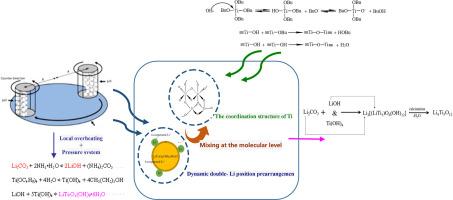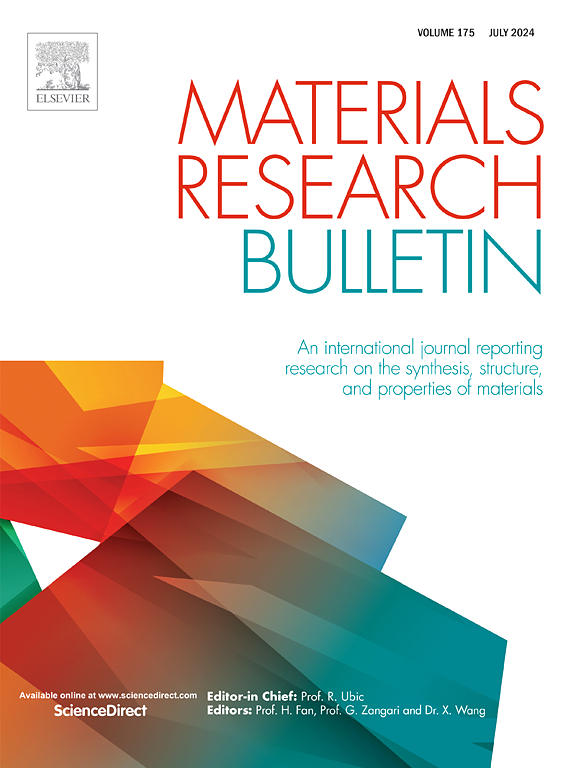Optimized and nonTi-site doped synthesis of lithium titanate by mechanochemical method
IF 5.3
3区 材料科学
Q2 MATERIALS SCIENCE, MULTIDISCIPLINARY
引用次数: 0
Abstract
The Li2CO3-ammonia-ballmilling synthesis system of Li4Ti5O12 (LTO) was optimized and doped Li and O by theirs adjacent elements Mg and F respectively. By adjusting the ballmilling parameter, the distribution of Li and Ti sources, the hydrolysis rate and different nucleophilic / electrophilic hydrolysis path of Ti, and the interaction between Li and Ti species can be effectively controlled. The temperature programmed calcination is beneficial to the formation of the middle state (Li2TiO3), obtaining the high quality LTO. Mg and F doping can further optimize the hydrolysis and condensation degree of Ti source, the number of crystal nucleus and the particle size. Therefore, the initial first discharged capability of Mg doped LTO and F doped LTO reach to 152.4 mAh/g and 163.1 mAh/g at 5 C respectively, corresponding 32.4 % and 41.7 % enhancing compared to LTO (115.1 mAh/g). Moreover, the discharge voltage of LTO-Mg decreases from 1.5 V to 1.3 V.

用机械化学法优化合成非钛位掺杂钛酸锂
对Li4Ti5O12(LTO)的Li2CO3-氨研磨合成体系进行了优化,并分别用相邻元素Mg和F掺杂了Li和O。通过调节球磨参数,可以有效控制 Li 和 Ti 的来源分布、Ti 的水解速率和不同的亲核/亲电水解路径,以及 Li 和 Ti 之间的相互作用。温度编程煅烧有利于中间态(Li2TiO3)的形成,从而获得高质量的 LTO。掺杂 Mg 和 F 能进一步优化 Ti 源的水解和缩合程度、晶核数量和粒度。因此,掺杂镁的 LTO 和掺杂氟的 LTO 在 5 C 时的初始首次放电能力分别达到 152.4 mAh/g 和 163.1 mAh/g,与 LTO(115.1 mAh/g)相比分别提高了 32.4% 和 41.7%。此外,LTO-Mg 的放电电压从 1.5 V 降至 1.3 V。
本文章由计算机程序翻译,如有差异,请以英文原文为准。
求助全文
约1分钟内获得全文
求助全文
来源期刊

Materials Research Bulletin
工程技术-材料科学:综合
CiteScore
9.80
自引率
5.60%
发文量
372
审稿时长
42 days
期刊介绍:
Materials Research Bulletin is an international journal reporting high-impact research on processing-structure-property relationships in functional materials and nanomaterials with interesting electronic, magnetic, optical, thermal, mechanical or catalytic properties. Papers purely on thermodynamics or theoretical calculations (e.g., density functional theory) do not fall within the scope of the journal unless they also demonstrate a clear link to physical properties. Topics covered include functional materials (e.g., dielectrics, pyroelectrics, piezoelectrics, ferroelectrics, relaxors, thermoelectrics, etc.); electrochemistry and solid-state ionics (e.g., photovoltaics, batteries, sensors, and fuel cells); nanomaterials, graphene, and nanocomposites; luminescence and photocatalysis; crystal-structure and defect-structure analysis; novel electronics; non-crystalline solids; flexible electronics; protein-material interactions; and polymeric ion-exchange membranes.
 求助内容:
求助内容: 应助结果提醒方式:
应助结果提醒方式:


